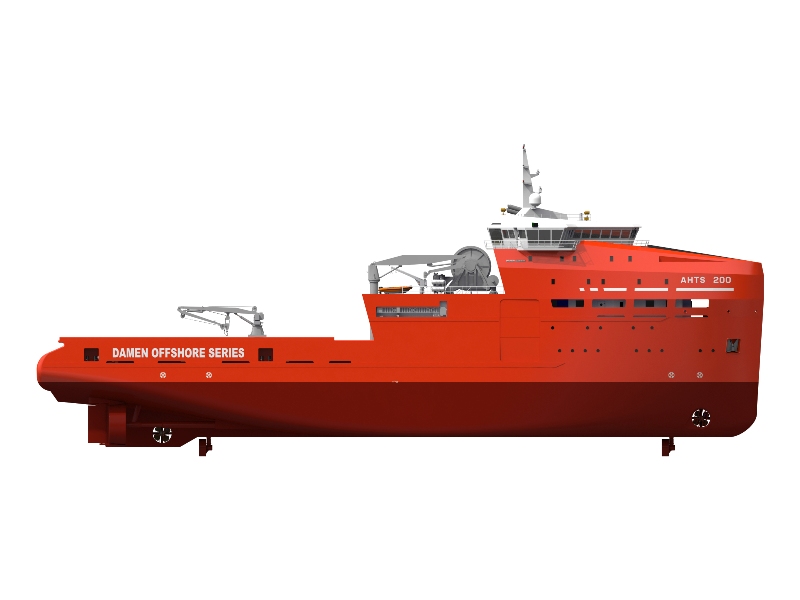
Deepwater AHTS vessel introduced

The newly designed Damen AHTS 200
In designing the Damen AHTS 200, the latest addition to the Damen Offshore Series, the shipbuilder said that it had conducted extensive research on hull optimisation, seakeeping qualities, noise and vibration reduction, and fuel oil consumption reduction, while also considering changing rules and regulations, client needs and lessons learned from other Damen designs.
Damen said the vessel included a new and innovative winch arrangement that was decisive for its overall dimensions and layout. For the development of this extensive winch package, Damen teamed up with Netherlands-based Huisman Equipment, which specialises in heavy-lift and deepwater cranes, winches and drilling equipment. The electrically driven winches resulting from this cooperation are a departure from the low-pressure hydraulics traditionally dominating the market.
The vessel can generate 200 to 250 tonnes of bollard pull and is fitted with engines in a father-son layout, featuring twin-in single-out gearboxes driving CP propellers in a nozzle. High-performance flap-type rudders fitted to rotary vane steering gears facilitate a high degree of manoeuvrability supported by ample side thrust capacity, including tunnel thrusters as well as retractable thrusters fore and aft.
Forward of the winches, ample space has been reserved for the fitting of a high-end ROV system with the possibility of launching through a side door. The high-beam AHTS could serve as a suitable platform for mounting a subsea construction crane. The design can easily be upgraded with dedicated anti-heeling systems, moon pools and sophisticated diving systems, according to Damen.
The vessel can accommodate up to 45 persons in single and double cabins fitted in accordance with the Damen Business Line or Executive Line and made of modern and durable materials. Special attention has been paid to sufficient natural lighting through maximum-sized windows. State-of-the-art infotainment systems, offering multiple levels of data communication, support the functionality and comfort of the vessel.
Despite its standardisation philosophy, Damen said it offered ample opportunities to include owners’ standards and component choices for maximal support of their operations. It added that the vessel had been designed following an extensive DNV-class notation, although other class societies may be considered as well.
